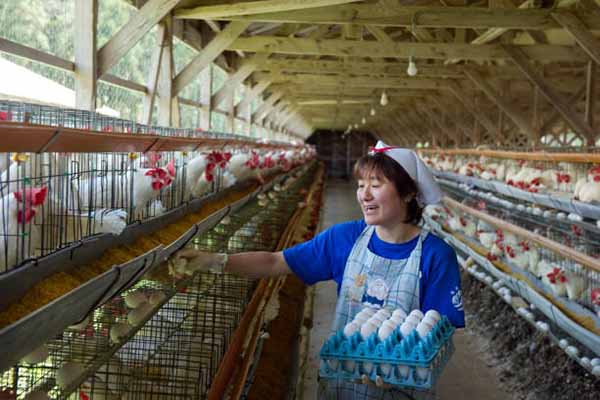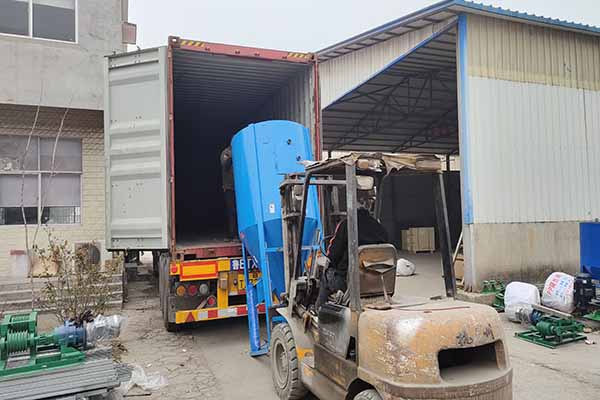The Impact of Humidity Control on Chicken Growth in Kenyan Chicken Farms
Time : 2025-06-30
Understanding the impact of humidity control on chicken growth is crucial for the success of Kenyan chicken farms. Humidity, as a key environmental factor, can significantly influence the productivity and health of poultry. In this article, we delve into the specifics of how humidity control systems can optimize chicken growth in the Kenyan poultry industry.
Introduction to Humidity Control in Chicken Farms
Humidity, the measure of atmospheric moisture, plays a pivotal role in poultry farming. It affects various aspects of chicken growth, including feed conversion, egg production, and overall health. In Kenya, where the climate is generally humid, managing humidity levels is essential for maintaining optimal conditions for chicken growth.

Climate Conditions in Kenya
Kenya’s diverse climate, ranging from tropical to arid regions, poses unique challenges for poultry farmers. The high humidity levels, espec ially during the rainy season, can lead to increased risk of diseases, reduced growth rates, and poor feed conversion ratios.
ially during the rainy season, can lead to increased risk of diseases, reduced growth rates, and poor feed conversion ratios.
The Role of Humidity in Chicken Growth
Feed Conversion and Growth Rate
Humidity can significantly impact feed conversion and growth rate in chickens. High humidity levels can lead to the spoilage of feed, as it provides an ideal environment for the growth of mold and bacteria. This not only reduces the nutritional value of the feed but also increases the risk of digestive issues in chickens. Conversely, controlled humidity levels can prevent feed spoilage, leading to better feed conversion and improved growth rates.
Egg Production
In the context of egg production, humidity control is equally important. High humidity can lead to poor shell quality and reduced egg size. On the other hand, low humidity can result in shell cracks and reduced egg production. Optimal humidity levels are essential for maximizing egg yield and maintaining egg quality.
Health and Disease Resistance
Humidity also affects the health and disease resistance of chickens. High humidity creates a conducive environment for the growth of many pathogens, including bacteria, viruses, and fungi. This increases the risk of respiratory diseases, enteritis, and other health issues. By controlling humidity levels, poultry farmers can reduce the incidence of diseases, leading to healthier flocks.
Humidity Control Systems in Kenyan Chicken Farms
Humidity Measurement Devices
Effective humidity control begins with accurate measurement. Kenyan chicken farms can invest in humidity sensors that provide real-time data on indoor humidity levels. This allows farmers to make informed decisions regarding ventilation and heating or cooling systems.
Ventilation Systems
Ventilation is a critical component of humidity control. Properly designed ventilation systems can regulate air exchange rates, ensuring that the indoor environment remains within the optimal humidity range. In regions wi th high humidity, mechanical ventilation systems can be integrated with dehumidifiers to remove excess moisture from the air.
th high humidity, mechanical ventilation systems can be integrated with dehumidifiers to remove excess moisture from the air.
Dehumidification Systems
Dehumidification systems are essential in humid climates like those found in Kenya. These systems remove moisture from the air, reducing humidity levels and creating a more comfortable environment for chickens. Dehumidifiers can be installed as part of the ventilation system or as standalone units in specific areas of the farm.
Heating and Cooling Systems
Climate control is another vital aspect of humidity management. Heating systems can be used to maintain optimal temperatures during cooler months, while cooling systems are crucial during the hot and humid season. These systems, when combined with proper ventilation, can help keep humidity levels within the desired range.
Case Studies
Several case studies have demonstrated the positive impact of humidity control on chicken growth in Kenyan chicken farms. For instance, a farm in Rift Valley, Kenya, implemented a comprehensive humidity control system, which included humidity sensors, ventilation systems, and dehumidifiers. The result was a 20% increase in feed conversion rates and a 15% improvement in egg production within the first year.
Conclusion
Humidity control is a critical aspect of chicken farming in Kenya. By investing in proper humidity control systems, farmers can improve feed conversion rates, maximize egg production, and enhance the overall health and productivity of their flocks. As the Kenyan poultry industry continues to grow, the implementation of advanced humidity control technologies will be essential for sustainable and profitable operations.











